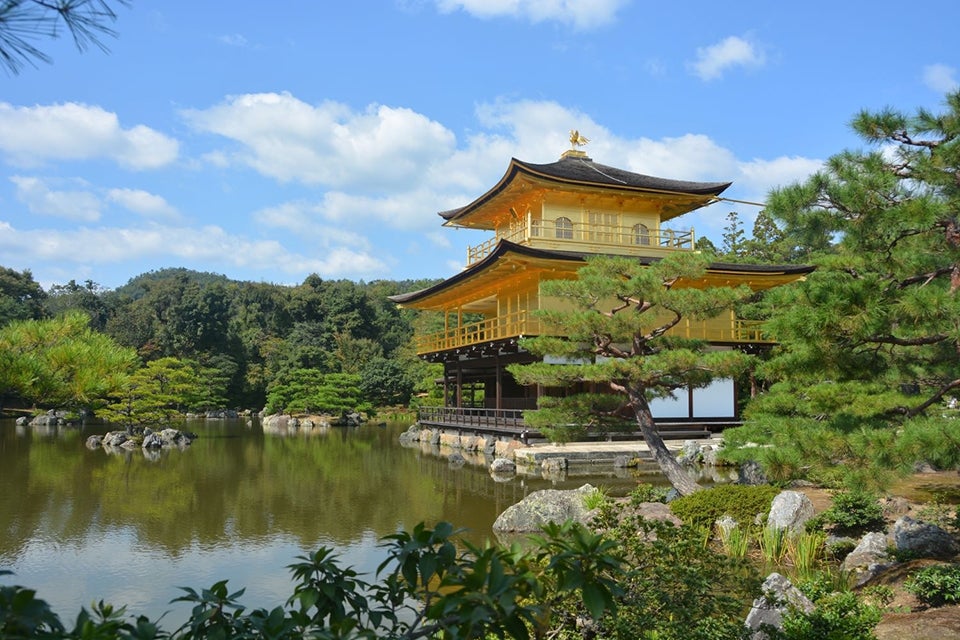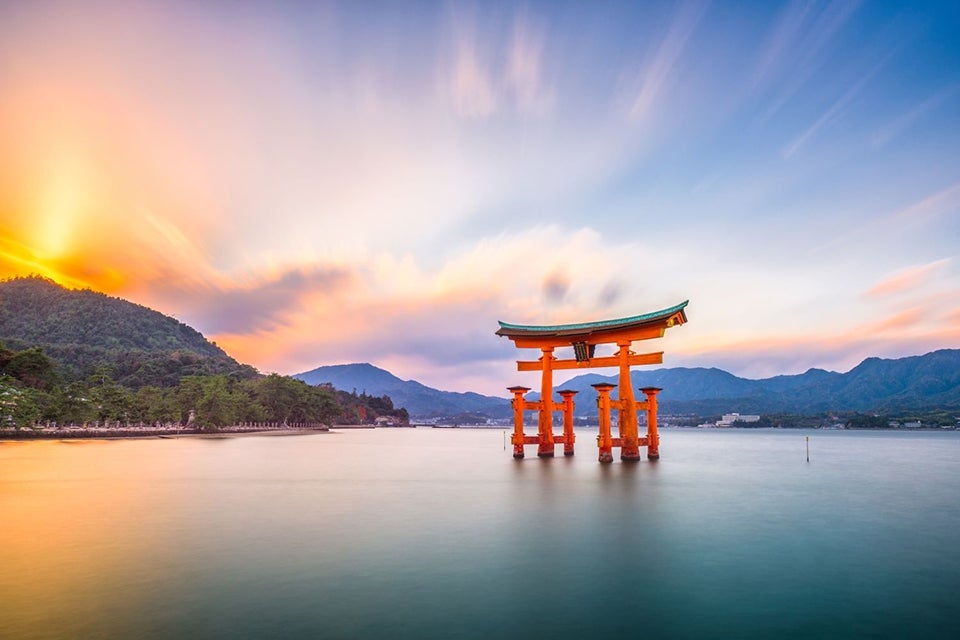Group Size: From 16-31 participants
Price: $10,990 per person double occupancy (18 years and older) / $9,990 per person double occupancy (6–17 years) / $3,000 single supplement / $1,000 discount for third person in triple accommodations
Trip Overview
This journey embraces Japan’s frenetic cities, revered natural environment and enduring traditions that coexist in unique harmony. It begins in Kyoto, the ancient capital of Japan. It then continues to Hiroshima, a city that is now at the center of an international peace movement. Visit the island of Miyajima, a UNESCO World Heritage site, considered to be one of Japan’s “three most beautiful places” with its red torii standing in the ocean during high tide. Toyota City provides insight into the latest manufacturing technology, while Hakone’s geothermal forces provide natural hot springs for healing and relaxation. The journey culminates in Tokyo, one of the world’s must-see cities. Everywhere one turns, there are shops of every sort, tantalizing food stalls, incongruous shrines, and flashing neon lights.
Schedule by Day
- Jun 22: Depart the U.S. / Cross the International Date Line
- Jun 23: Arrive Osaka, Japan / Transfer to Kyoto
- Jun 24: Kyoto
- Jun 25: Kyoto
- Jun 26: Kyoto / Hiroshima
- Jun 27: Hiroshima / Miyajima
- Jun 28: Hiroshima / Nagoya
- Jun 29: Nagoya / Hakone
- Jun 30: Hakone / Tokyo
- Jul 1: Tokyo
- Jul 2: Tokyo
- Jul 3: Tokyo / Depart for the U.S. / Cross the International Date Line / Arrive home
Pricing
$10,990 per person double occupancy (18 years and older) / $9,990 per person double occupancy (6–17 years) / $3,000 single supplement / $1,000 discount for third person in triple accommodations
Accommodations
- 3 nights at Hotel Okura Kyoto
- 2 nights at Rihga Royal Hotel, Hiroshima
- 1 night at Nagoya Marriott Associa Hotel, Nagoya
- 1 night Hakone Kowakien Tenyu, Hakone
- 3 nights at Imperial Hotel, Tokyo
Extensions
We recommend adding a simple, one-night pre-trip extension with a visit to Nijo Castle for travelers who would like to arrive a day early and begin to get over jetlag before the main tour starts.
What to Expect
This is a moderately strenuous program that is at times physically demanding and busy, with some early departures from the hotels and activities scheduled throughout the day and at times, into the evening. While we will maintain a moderate pace throughout the program, participants should be fit and in active good health, and able to keep up with the group without assistance from tour staff.
We’ll use a variety of transportation, from modern air-conditioned motorcoaches and trains to ferry, boat, and cable car. Most of the coach transfers during the program are 30-60 minutes each. On arrival day, the shared shuttles take ~2½ to 3 hours from Kansai Airport to the hotel in Kyoto, and ~1½ to 2 hours from Itami Airport. On the final day, the Airport Limousine Bus from the hotel in Tokyo to the Narita Airport takes 1 ½ to 2 hours; from the hotel to Haneda Airport takes 40 minutes to 1 hour.
There will be considerable walking, up to two miles at a time. Walking tours can last as long as three hours, including periodic stops, and much of the walking will take place in historic temple and garden complexes, where paths are on uneven terrain. Access to Monkey Park Iwatayama is via a steep 15-to-20-minute walk up the mountain. Please note that many historic buildings and temples do not have elevators, and some sites have several steps without handrails.
There will be several occasions during most days when you will have to remove your shoes to enter temples and other sites. We recommend that you bring shoes that can be slipped on and off easily, and that you bring a supply of socks. As it’s rare to find places to sit down while removing your shoes, you will likely find it easiest to wear shoes without laces. You may also find that a compact shoe horn comes in handy.
Japanese cuisine reflects a passion for fresh, seasonal foods and artful presentations. Seafood, vegetables, rice, and soy products play a predominant role. Small amounts of seafood are used as flavorings in many dishes and most broths. Completely gluten-free menus are rare in Japan due to the prevalence of soy sauce as a seasoning (though gluten-free soy sauce is commonly available in the U.S., Japanese restaurants do not use it). While seafood allergies and gluten-free requests can be accommodated if requested 60 days in advance, the variety of food and its presentation may be limited. Group lunches and dinners will feature Japanese cuisine, though some meals will be western style for variety’s sake. Breakfasts a variety of western and Japanese options with local selections such as rice (or rice porridge), miso soup, savory custard, grilled fish, and steamed or pickled vegetables.
This promises to be a memorable journey, but as with all travel, a flexible attitude, a spirit of adventure, and a willingness to explore new areas will enhance your enjoyment of this program. You do not have to participate in all of the scheduled activities, except when traveling to the next destination. We are sure you will be pleased with the exciting educational program provided; however, it is important that you understand the pace and activity level in advance.




